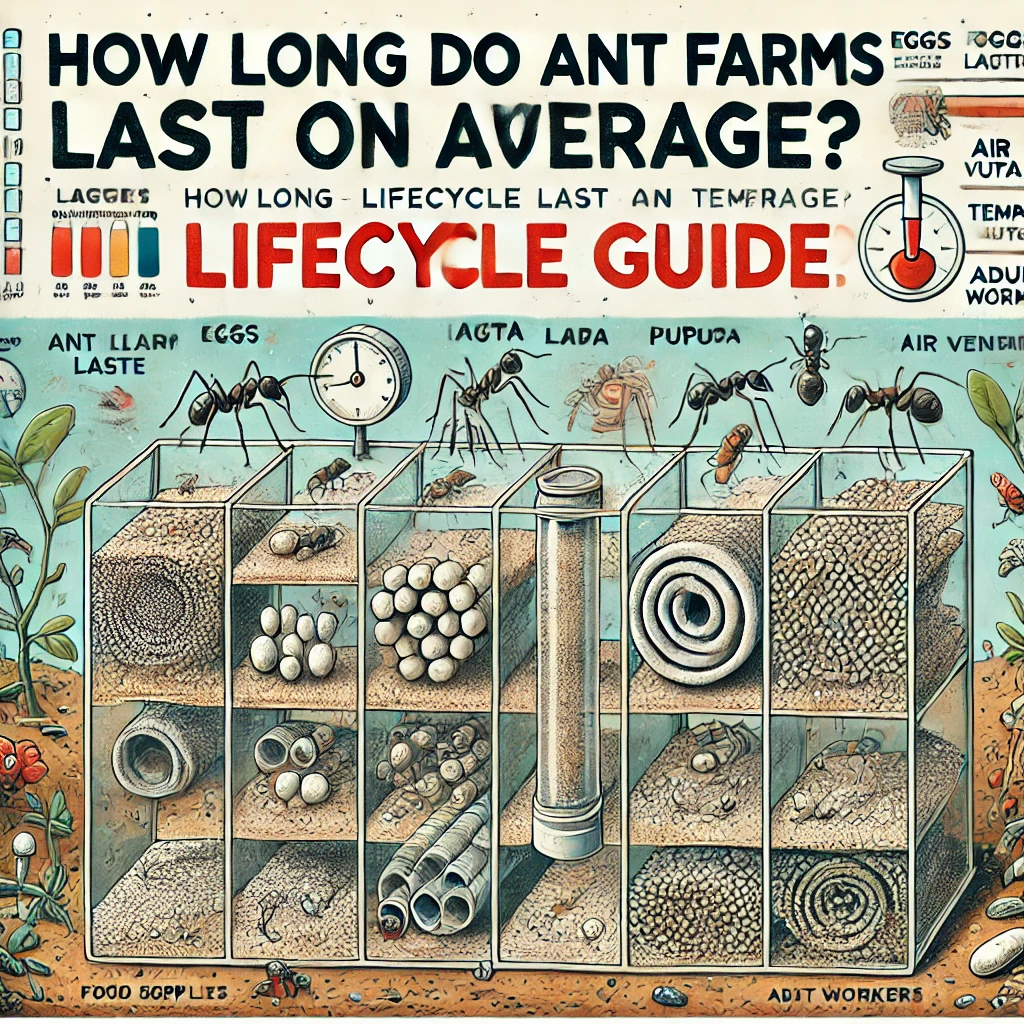Ant farms offer a fascinating glimpse into the world of ants, allowing you to observe their behavior and social structures up close. You can easily purchase an ant farm, set it up, and watch as these industrious little creatures create intricate tunnels and anthills right before your eyes. However, a common question arises: How long do ant farms actually last? There’s a wealth of science behind ant farms, making them excellent educational tools for classrooms and homes. But it’s important to note that the ants’ lifespan can be shorter than the lifespan of the farm.
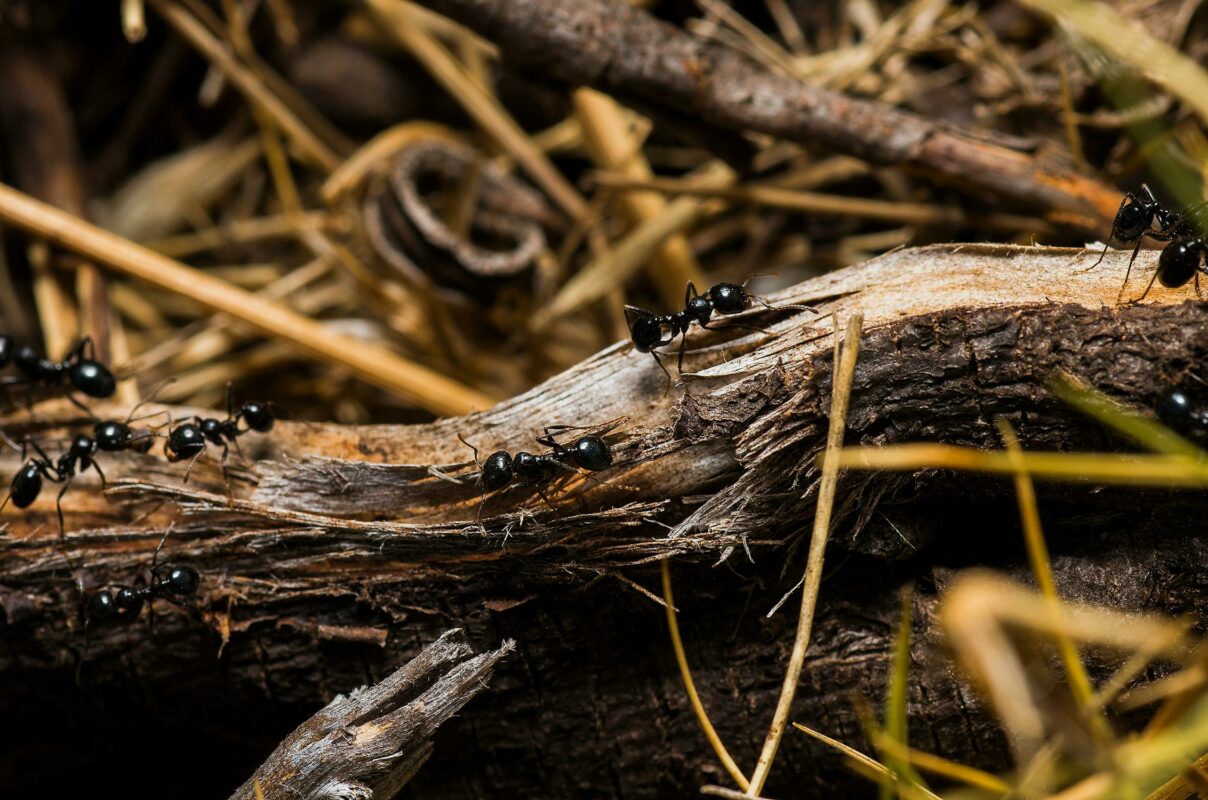
More About: Ant Farms
Ant farms offer a unique way to observe the daily lives and behaviors of ants up close. Ant farms provide an incredible window into the complex world of these tiny but highly organized insects, whether used for educational purposes in classrooms or simply as a fun and engaging hobby.
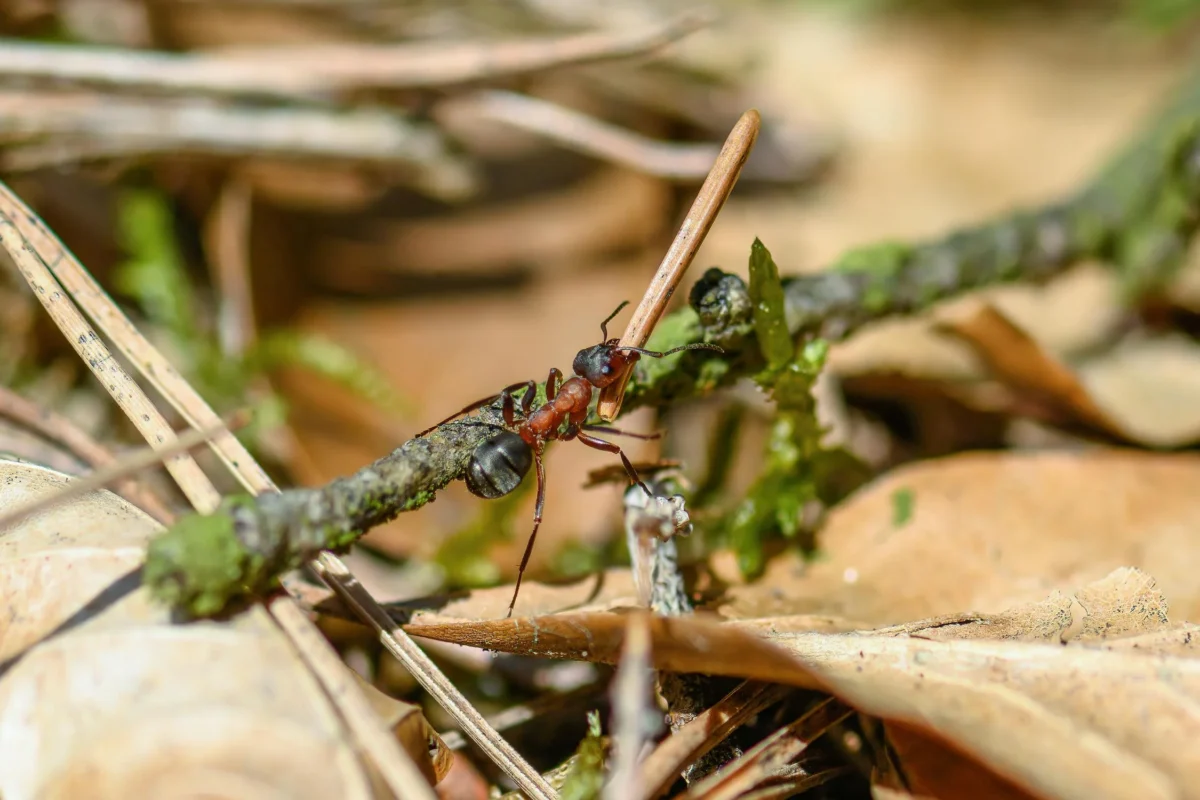
But a common question often arises: How long do ant farms last?
If you’ve ever set up an ant farm, you might have wondered whether your tiny colony will thrive for years or will be a short-lived experience. Several factors determine the lifespan of an ant farm, from the species of ants you choose to how well you maintain their environment. This article will explore everything you need to know about ant farm longevity and offer practical tips to help your colony thrive for as long as possible.
Understanding the Lifespan of an Ant Farm
On average, an ant farm can last anywhere from a few months to several years, depending on various factors such as the type of ants, habitat conditions, and maintenance routine. Here’s a breakdown of what influences an ant farm’s longevity:
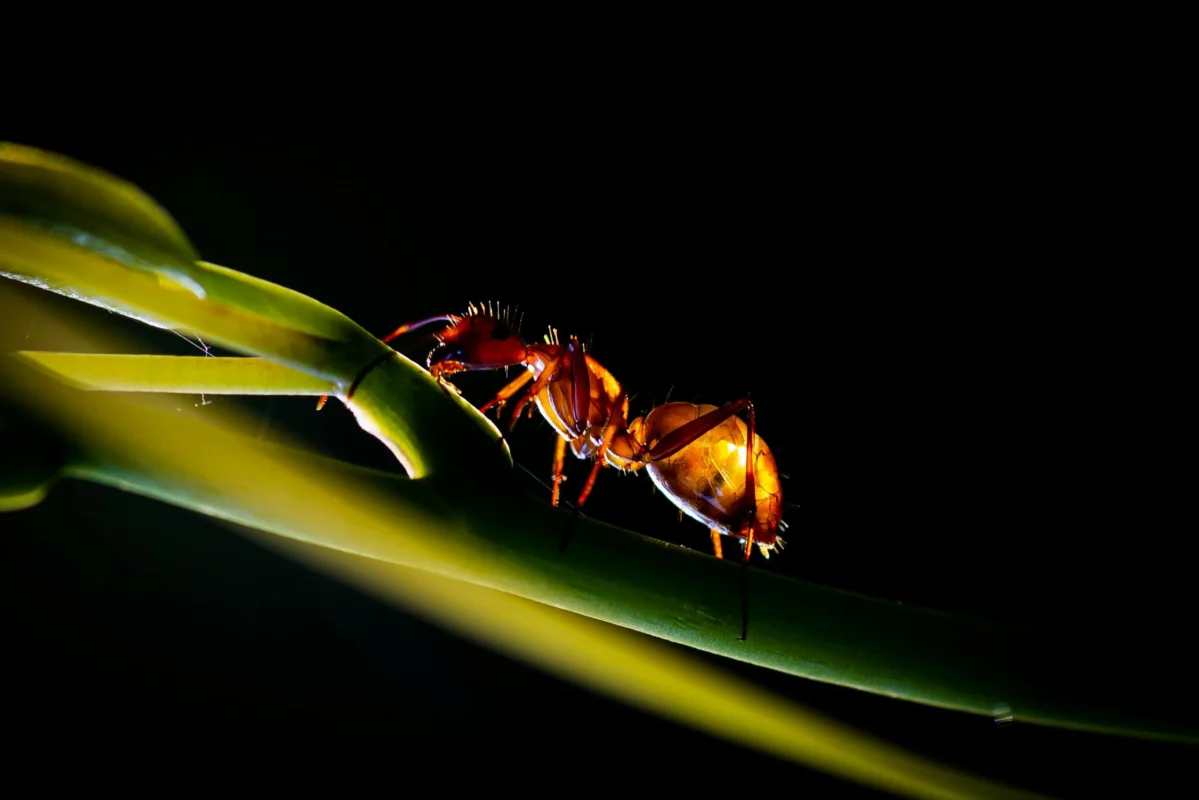
Type of Ants
The species of ants you introduce to your farm plays a major role in determining how long it will last. Some common ant species used in ant farms include:
| Ant Species | Average Lifespan in an Ant Farm |
|---|---|
| Harvester Ants | 2 to 3 months |
| Carpenter Ants | 6 months to 2 years |
| Black Garden Ants | 2 to 5 years |
| Red Fire Ants | 6 months to 1 year |
Certain ants, like Black Garden Ants, have queens that live for several years. If your farm includes a queen, the colony can potentially survive and expand for many years under optimal conditions. However, most commercial ant farms do not include a queen, meaning the worker ants will eventually die without reproducing.
Habitat Quality
The material and design of your ant farm contribute to its longevity. High-quality acrylic or glass habitats with proper ventilation and adequate space for tunneling can last much longer than cheap plastic models that may degrade over time.
Maintenance and Care
Regular maintenance significantly impacts the lifespan of your ant farm. Some key factors include:
- Providing clean and fresh water sources
- Removing dead ants to prevent contamination
- Avoiding mold buildup by keeping the farm dry and clean
- Offering proper nutrition to keep the colony healthy
An ant farm can last anywhere from a few months to several years by maintaining the right environment.
The Lifespan of Ant Farms
On average, an ant farm can last anywhere from two to three years. These farms are typically constructed from a special plastic material that allows ants to dig and build their underground tunnels while providing a clear view for observers. The design usually includes an ant bin with holes, enabling the ants to create pathways. While individual ants may have shorter lifespans, they work together to construct a complex network of tunnels and chambers. This teamwork not only enhances the functionality of the farm but also contributes to its longevity. With proper care and maintenance, ant farms can last up to five years or even longer, especially if you take steps to prevent the ants from escaping or reproducing too quickly.
Lifecycle of Ants in Farms
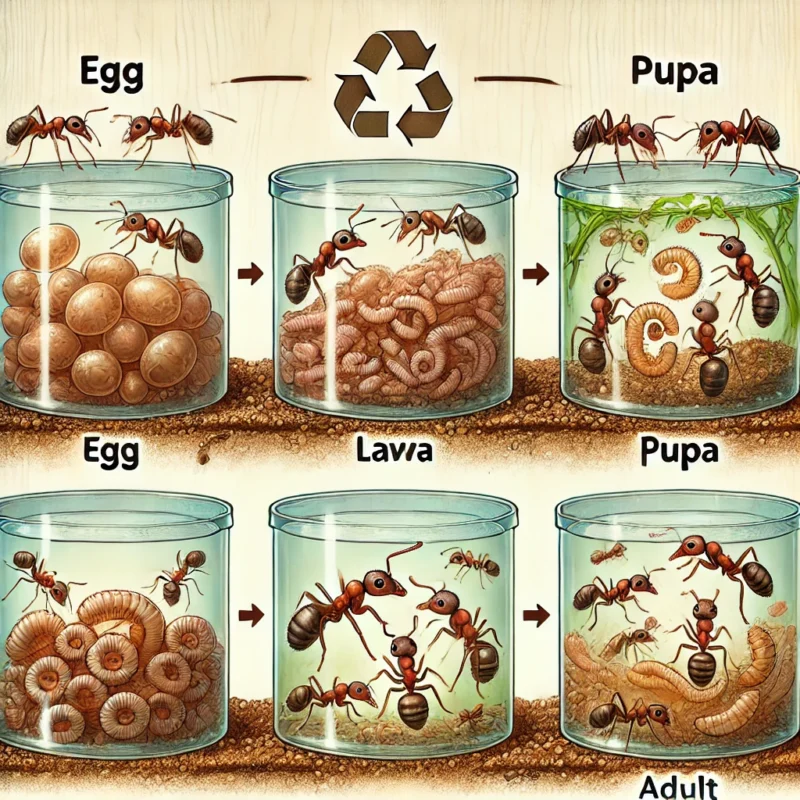
Understanding the lifecycle of ants in a farm setting is essential to maintaining a thriving colony. Like many insects, ants go through a series of developmental stages before reaching adulthood. In an ant farm, the lifecycle follows the same pattern as in the wild but with some limitations, particularly in the absence of a queen.
1. The Four Stages of an Ant’s Life
Ants experience a complete metamorphosis, passing through four distinct life stages:
| Life Stage | Description |
|---|---|
| Egg | Tiny, oval-shaped white eggs laid by the queen (if present). |
| Larva | Worm-like stage where ants consume food and grow rapidly. |
| Pupa | Ants undergo transformation inside a cocoon-like shell. |
| Adult | Fully formed ants emerge, ready to work and contribute to the colony. |
Egg Stage
Ants begin life as eggs. In the wild, a queen ant lays hundreds or thousands of eggs throughout her lifetime. However, in most commercial ant farms, there is no queen, which means no new eggs are laid. If a queen is present (which is rare in most kits), the farm can sustain a colony much longer as new worker ants hatch and replace those that die.
Larva Stage
After a few days to weeks, eggs hatch into larvae. These tiny, legless creatures rely entirely on worker ants for food and care. They consume a protein-rich diet to grow and eventually enter the pupal stage. In an ant farm, larvae are rarely seen unless you have a queen that continuously lays eggs.
Pupa Stage
Once larvae grow large enough, they spin a silk cocoon around themselves (some species don’t spin cocoons) and enter the pupal stage. Inside, they undergo significant transformation, developing legs, antennae, and their exoskeleton.
Adult Stage
When the metamorphosis is complete, adult ants emerge from the pupal case. Worker ants immediately begin foraging, tunneling, and maintaining the colony. In an ant farm without a queen, only adult worker ants are introduced, meaning the farm has a limited lifespan as these ants eventually die off.
2. The Role of Each Ant in a Farm
A typical ant colony consists of different types of ants, each with a specific role. In commercial ant farms, you typically have only worker ants, but in a natural colony, ants are divided into these roles:
| Ant Type | Description |
| Queen | The egg-laying leader of the colony (not included in most farms). |
| Workers | Female ants responsible for digging, foraging, and caring for the colony. |
| Soldiers | Larger ants that defend the colony from threats. |
| Males | Short-lived ants whose only purpose is mating with the queen. |
Since most ant farms do not include a queen, the colony will consist only of worker ants. Without new eggs being laid, the lifespan of the farm is limited to how long these workers survive, typically a few months to a year.
3. How Long Each Stage Lasts
Each ant’s time in a specific life stage depends on species, temperature, and food availability. Below is a general timeline:
| Life Stage | Duration |
| Egg | 7 to 14 days |
| Larva | 10 to 20 days |
| Pupa | 10 to 30 days |
| Adult | Several months to a few years (if a queen is present) |
4. Factors That Influence the Lifecycle in an Ant Farm
While ants in the wild have unlimited space and resources, an ant farm provides a controlled environment with certain constraints. The following factors impact the lifecycle:
1. Presence of a Queen
- If a queen is present, the colony can continuously replenish itself with new workers, extending the farm’s longevity indefinitely.
- Without a queen, the worker ants will eventually die off, ending the colony.
2. Food and Nutrition
- Proper food sources (sugar for energy, protein for growth) ensure ants remain active and healthy.
- Lack of nutrition can shorten the lifespan of worker ants.
3. Temperature and Humidity
- Ideal temperature: 75°F to 86°F (24°C – 30°C)
- Humidity levels should stay between 40% and 60%
- Too much moisture leads to mold, while too little causes dehydration.
4. Farm Size and Space
- Limited space restricts natural behaviors, but a well-designed farm can sustain ants for longer.
- Some species require larger tunnels to thrive.
5. Air Quality
- Poor ventilation can lead to weak ants and increased mortality rates.
- Ensuring fresh airflow helps maintain a healthy colony.
5. The End of an Ant Colony
In an ant farm, the colony’s end is inevitable unless a queen is present. Here’s what happens:
- Worker ants gradually die of old age or natural causes.
- Without new eggs, the colony shrinks over time.
- Eventually, no ants remain, and the farm becomes inactive.
- At this stage, the farm can be cleaned and restarted with a new batch of ants.
Tips to Extend Your Ant Farm’s Lifespan
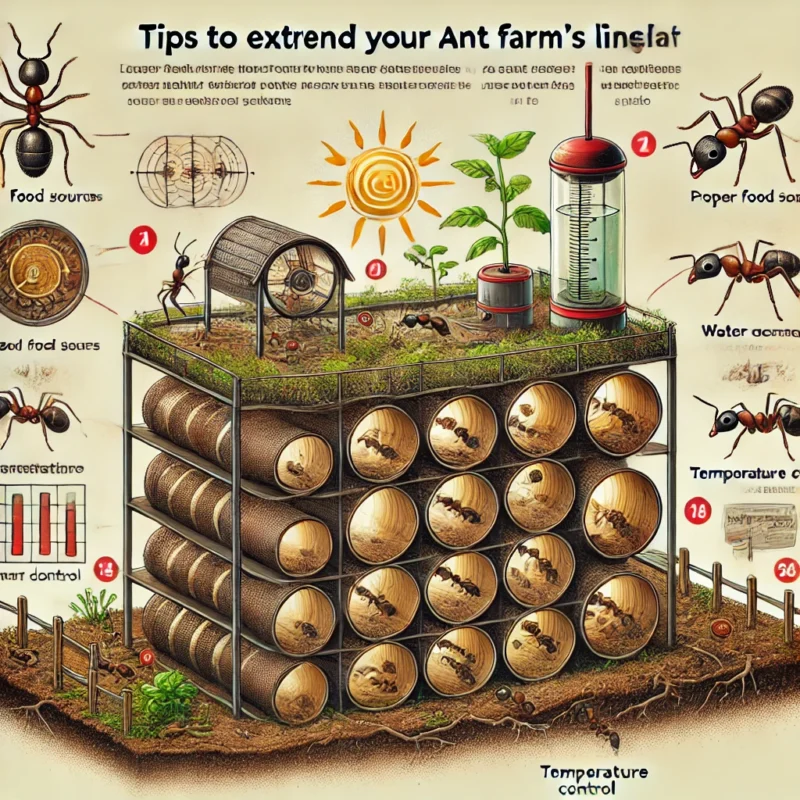
If you want to extend the lifespan of your ant farm, here are some essential steps to follow:
- Choose Quality Materials: Start with high-quality ant farm sand, less likely to harbor mold and parasites. This will help maintain a healthy environment for your ants.
- Maintain Humidity: Monitor humidity levels, as they are crucial for the ants’ survival.
- Use Liquid Ant Food: Providing the right nutrition is essential for the health of your colony.
- Regular Maintenance: Check your farm regularly to remove any waste buildup, clean the container with warm water, and refresh the sand as needed.
- Inspect for Issues: Look for signs of disease or pest infestations to address problems early on.
By following these simple steps, you can significantly increase the lifespan of your ant farm.
1. Use High-Quality Ant Farm Substrate
The material used for tunneling is crucial. High-quality sand or gel ensures that ants can dig comfortably and safely. Avoid using standard garden soil, which can contain mold, bacteria, or harmful parasites.
2. Maintain Proper Humidity and Temperature Levels
Ants thrive in specific environmental conditions. Most species do well in temperatures between 75°F and 86°F (24°C – 30°C) and humidity levels between 40% and 60%. Too much moisture can lead to mold, while excessive dryness can cause dehydration.
3. Provide Adequate Food and Water
Unlike in the wild, ants in an enclosed habitat rely entirely on you for their nutrition. A proper diet includes:
- Sugar-based foods (honey, fruit pieces, or specially designed ant food gel)
- Protein sources (tiny bits of boiled egg, mealworms, or crushed seeds)
- Water (cotton soaked in water or a small water dispenser to prevent drowning)
4. Clean the Habitat Regularly
- Remove uneaten food to prevent mold growth.
- Clear out dead ants to maintain hygiene.
- Avoid using chemical cleaners—warm water and mild soap work best.
5. Prevent Ant Escape
Ensuring your farm is escape-proof is essential. A well-sealed container with small ventilation holes will keep your ants inside while allowing airflow. Applying a thin layer of petroleum jelly along the edges can prevent ants from climbing out.
6. Keep the Colony Active and Stimulated
Ants are highly active creatures that thrive in a structured environment. You can stimulate their natural instincts by:
- Introducing small obstacles in their paths to encourage problem-solving
- Adding small twigs or leaves to mimic a natural setting
- Slightly adjusting lighting conditions to simulate day and night cycles
Environmental Factors Impacting Ant Farm Durability
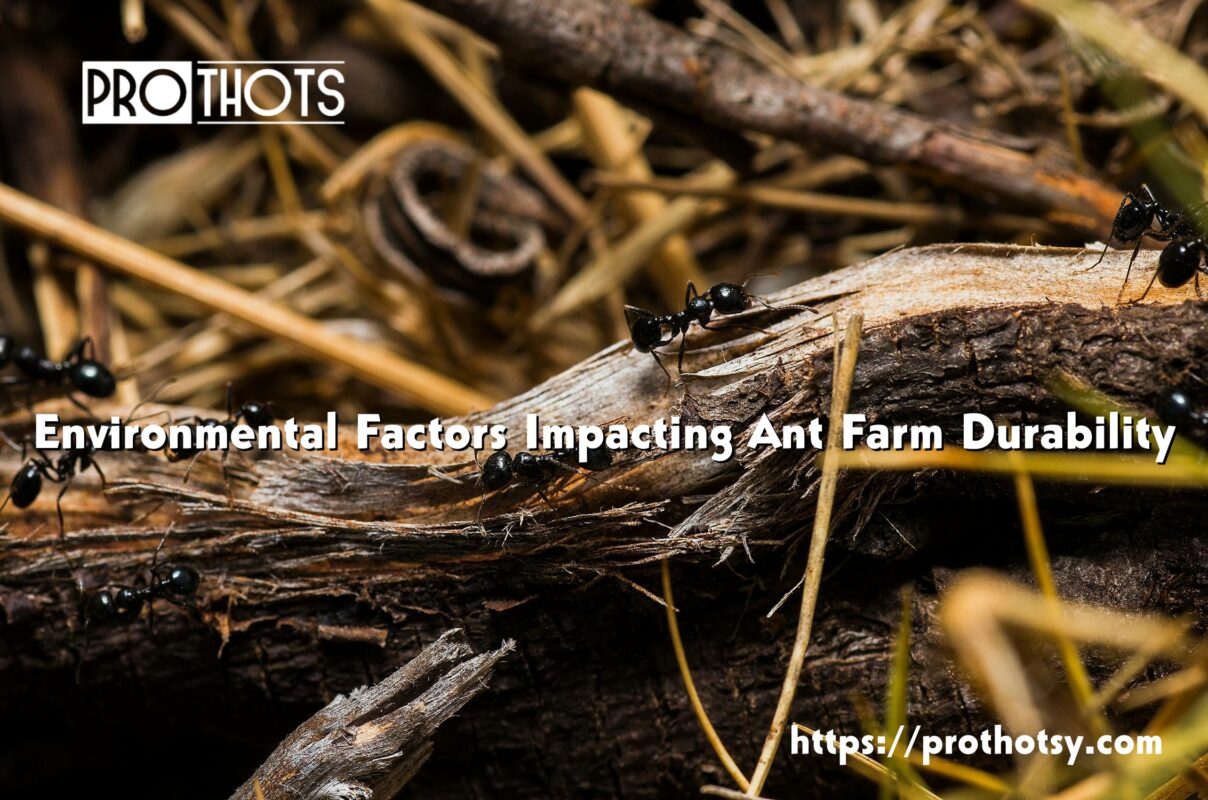
Understanding the environmental factors that affect the durability of your ant farm is key to maximizing its lifespan. Generally, ant farms can last from one to two years on average, but this can vary based on conditions. Temperature and humidity are the two most critical factors. In warm and dry climates, the lifespan of an ant farm may be shortened. Conversely, cooler and less arid environments tend to promote longer lifespans. To optimize your ants’ conditions, keep the temperature between 75 and 86 degrees Fahrenheit and maintain relative humidity levels between 40 and 60 percent.
Some of the most critical elements include:
| Factor | Effect on Ant Farm Longevity |
| Temperature | Too hot = dehydration; Too cold = inactivity |
| Humidity | Excess moisture = mold; Too dry = ant dehydration |
| Light Exposure | Too much light = stress; Darkness = normal behavior |
| Air Circulation | Poor airflow = weak ants and mold growth |
Conclusion
With proper care, ant farms can last for many years, providing a rewarding experience for both children and adults. While the average lifespan of an ant farm may vary, owners can generally expect their farms to endure for a significant period. If you’re curious about how long ant farms last, remember that they can thrive long with the right attention and care. Why not consider getting one today?Did you find this information helpful? If so, feel free to explore more of our blog for additional insights and tips!
Frequently Asked Questions (FAQs)
1. Can an ant farm survive without a queen?
Yes, but only for a limited time. Worker ants can live for a few months without a queen, but without reproduction, the colony will eventually die out.
2. How often should I feed my ants?
Most ants should be fed every 2-3 days with small amounts of sugar-based foods and protein sources to maintain their health and energy levels.
3. What should I do if mold appears in my ant farm?
If mold appears, remove the affected area immediately and improve ventilation. Ensure the farm isn’t too humid and clean the habitat regularly.
4. Can I move my ant farm to a new container?
Yes, but it must be done carefully. Use a similar environment and slowly transfer the ants without damaging their tunnels.
5. Do ants in farms hibernate?
Some species do. If your ants slow down in winter, reduce feeding and keep them in a stable environment until they become active again.

